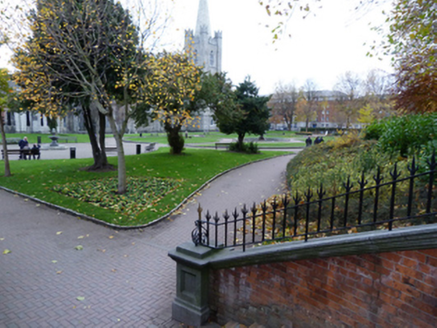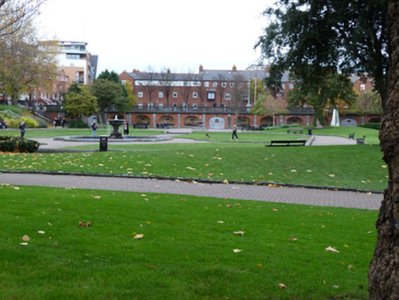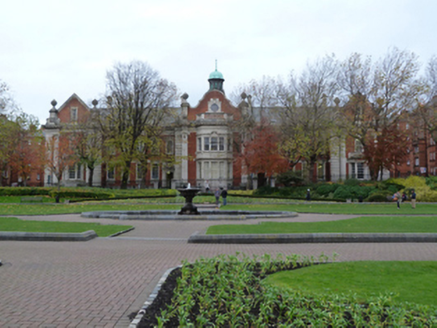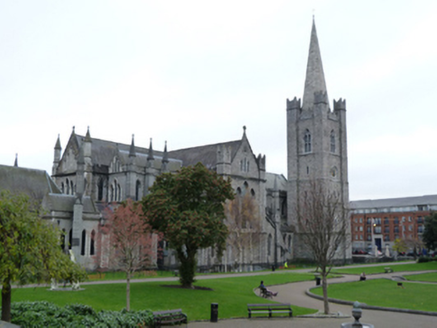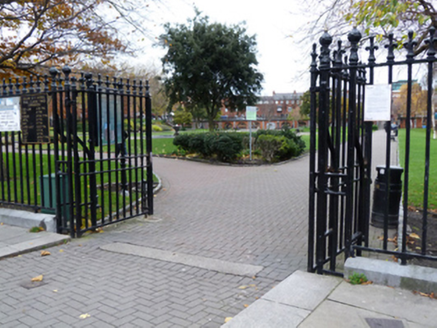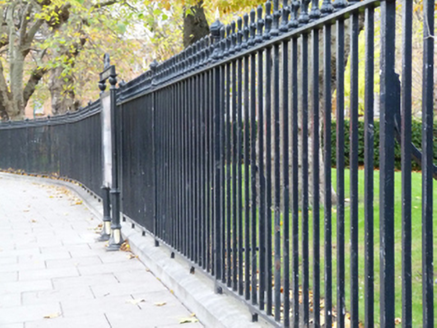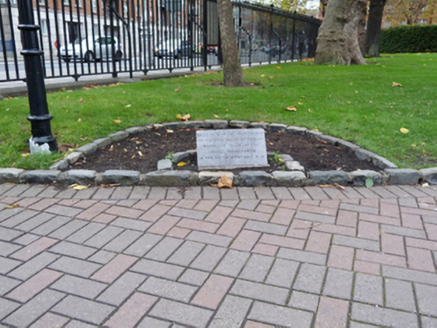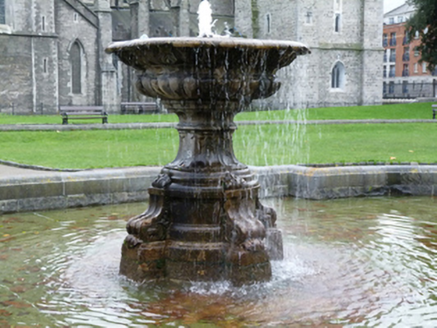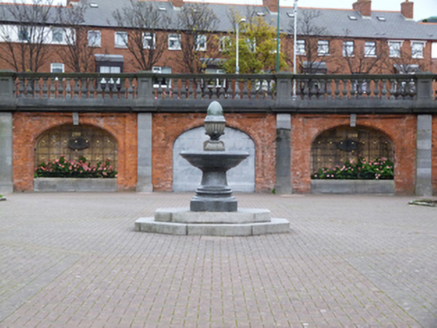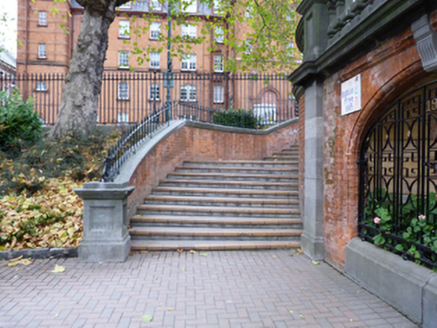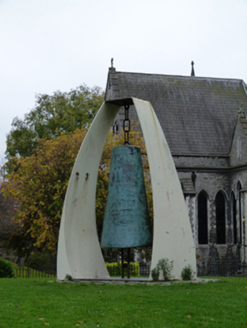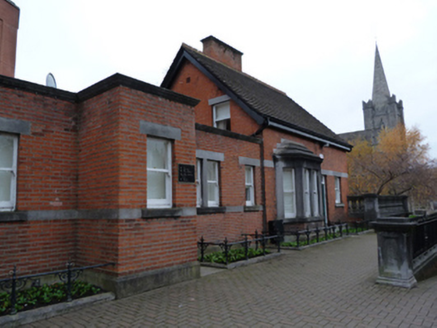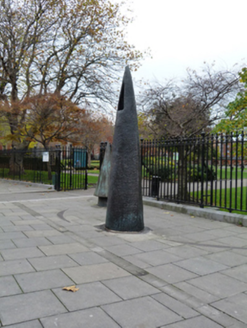Survey Data
Reg No
50080682
Rating
Regional
Categories of Special Interest
Archaeological, Architectural, Artistic, Social
Original Use
Park
In Use As
Park
Date
1900 - 1905
Coordinates
315202, 233587
Date Recorded
21/11/2013
Date Updated
--/--/--
Description
Rectangular-plan park, laid out in 1901, to north of Saint Patrick’s Cathedral. Lawned and planted areas bounded by granite setts and granite curbs. Sandstone fountain to centre set within granite plinth walls, having marble fountain on stepped base to east end. Raised terrace to east end with elliptical-headed alcoves having brick reveals and ashlar limestone pilasters and cornice, surmounted by cut stone balustrade accessed by flights of stone steps to the north and south ends. Detached three-bay single-storey park constable’s house to south-east corner. Bounded by cast-iron railings with fleur-de-lis railing heads having pedestrian gates to four corners and centre of northern boundary of park.
Appraisal
Saint Patrick’s Park, located to the north of the cathedral, was opened by King Edward VII in July 1902. It is bounded by Patrick Street to the west, Bull Alley to the north and Bride Street to the east. It was laid out as part of the redevelopment of the area by the Guinness family in the late nineteenth and early twentieth centuries and provides an attractive setting for both Saint Patrick’s Cathedral and the Iveagh Play Centre. The landscaping was the work of Mr. Crasp of Chester and the construction work was undertaken by engineer Mr. Arthur Dudgeon. The geometric landscaping is enhanced by the two stone fountains on the park's principal axis and a modern sculpture of a steel bell by Vivienne Roche. A brick terrace was constructed to cope with the fall in ground level between Bride Street Patrick Street, the upper level of which was used as a bandstand while the lower level provided a sheltered seating area.
